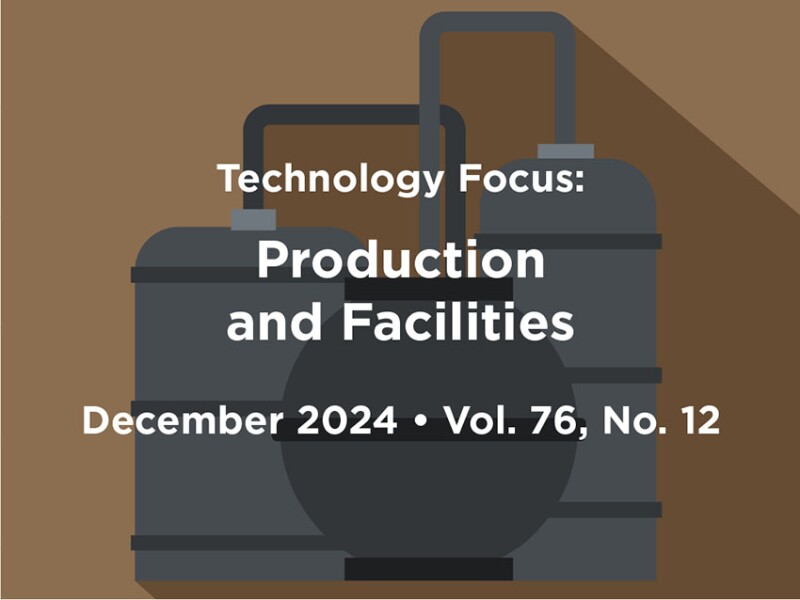This year has been both inspiring and exhilarating in the production and facilities domain, highlighted by a record 269 abstracts. This plethora of ideas fosters industry knowledge and promotes the exchange of innovative solutions driven by engineering advancements and data analytics. It covers the deployment of digital technologies, the journey toward decarbonization and its environmental impact, and the enhancement of energy efficiency and maintenance of asset integrity.
The process of reviewing a significant number of technical abstracts based on their relevance, originality, clarity, and potential impact on the oil and gas industry is essential to ensure that JPT’s readers see papers with high-quality contributions to the production and facilities community.
Comprehensive digital solutions cover the entire spectrum of production and facilities management, integrating a wide range of technologies such as advanced data analytics, Internet of Things devices, artificial intelligence, machine learning, cloud computing, automation, robotics, and digital twins.
To exemplify this, paper OTC 32872 outlines learnings by evaluating the routine of a floating production, storage, and offloading vehicle crew to identify scenarios for the application of ground robots in day-to-day offshore activities, leading to a boost in productivity while reducing human exposure to risk.
In the field of minimizing carbon footprint and promoting environmental sustainability, several academic papers have outlined strategies for reducing emissions led by a creative ecosystem of technologies and solutions, encompassing the deployment of methane emissions quantification at production facilities, reducing gas flaring, enhancing energy efficiency, repurposing of existing gas pipeline networks for the transport of hydrogen and hydrogen/methane blend, and using hydrogen fuel in a dual-fuel engine on a drilling rig.
A notable illustration is URTeC paper 3866061, which presents continuous-monitoring point sensors for methane emissions, tracking changes in parts per million of methane in the air. Collecting raw data and applying a proprietary data-science algorithm, using a plume-dispersion model with the continuously acquired data, the evidence is reported to the operator, identifying the piece of equipment from which emissions originate and quantifying the volume and rate of the emission.
In the asset-integrity-management landscape, the integration of digital technologies is playing a key role, whether through machine learning and artificial intelligence paired with fiber-optic distributed acoustic sensing technologies used to enhance pipeline integrity or rapid and reliable management of pipeline leak detection with a novel method on a multiphase-flow leak-detection model using only input and output parameters.
From the standpoint of composite and nonmetallic materials, ongoing product research, development, and qualification efforts are being pursued to meet rising demand to stretch the operational envelope and enhance reliability. With the rapid advancement of carbon capture use and storage wells, paper SPE 217664 provides a guideline for such selections based on the composition of the CO2 stream, including impurities and the composition of the saline formation into which the CO2 will be injected.
This Month’s Technical Papers
Ground Robots Bring Potential for Efficiency, Safety in FPSO Operations
Data-Science-Informed Operation, Maintenance Practices Reduce Emissions
Guidelines Assist Selection of Corrosion-Resistant Alloys for CCS and CCUS Injection Wells
Recommended Additional Reading
SPE 216229 Resource Optimization at Remote Facilities by Leveraging Advance Maintenance Practices Total Productive Maintenance, Operator-Driven Reliability, and Industry 4.0 Technologies by Muhammad Shahzad Ahmed, ADNOC, et al.
OTC 34661 Unleashing the Sky Potential: Revolutionizing Construction With Drones by Chen Khian Fong, Shell, et al.
SPE 217716 World’s First Demonstration of Hydrogen Blending in Dual-Fuel Engines on a Drilling Rig by W. Kernan, Caterpillar, et al.

Roberto Saldano, SPE, is technology director at Casius Consulting. He has experience with technology leadership in well engineering, production facilities, field operations, and methane-emissions-reduction management. Saldano has held positions at SLB and Petrobras-Pecom across Latin America, the Middle East, and Asia. Additionally, he has published and reviewed numerous SPE papers and has served as the SPE Co-Chair at the Abu Dhabi International Petroleum Exposition and Conference and various South American congresses. Saldano holds a bachelor’s degree in petroleum engineering from the National University of Patagonia San Juan Bosco. He is a member of the JPT Editorial Review Board and can be reached at hr.saldano@casiusfz.com.

